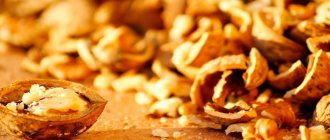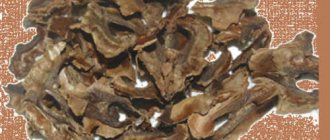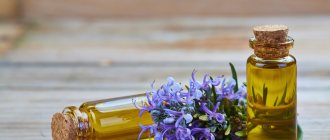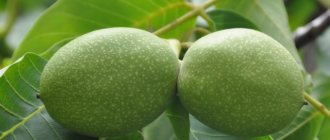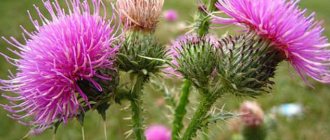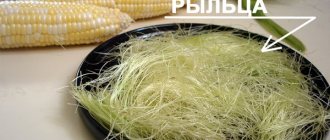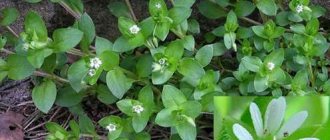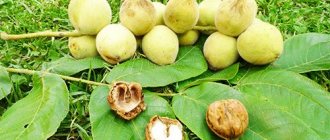Walnut (Juglans regia) – the most popular tree of the genus Juglans, belonging to the Walnut family (Juglandaceae).
Other names are Greek nut, royal nut, Voloshsky nut.
It grows to a height of up to 25 meters, and is overgrown with a luxurious 20-meter crown, consisting of well-developed branches spread widely from the gray trunk. The leaves are large, complex, ovoid green “canvases”, up to 20 cm long and 10 cm wide. The flowers are colored greenish and appear on the branches along with the blossoming of the leaves.
The most valuable fruits in folk medicine are the fruits of the tree, spherical or egg-shaped, which during development are covered with a dense light green peel. As it ripens (late summer, autumn), the peel bursts, and under it there is a woody “pit”. Inside the shell, separated by 2-5 partitions, there are edible kernels, also called nuts.
The natural habitat of growth is the territory of almost all of Eurasia, but the tree bears fruit well only in countries where there is a combination of heat and moisture (Ukraine, the Caucasus, the Balkans, Kyrgyzstan, Northern India and China, Greece, etc.). In severe frosts, the plant not only grows poorly, but also practically does not bear fruit.
Chemical composition
The amazingness of this plant is that almost all of its components are rich in useful substances, which is why walnuts are widely used in folk medicine and go well with the phrase known to many people: “Here, like in Greece, everything is there!”
Leaf composition - vitamins (, C, carotene), flavonoids (quercetin 3-arabinoside, hyperoside, kaempferol 3-arabinoside), quinones (alpha-hydrojuglone, beta-hydroquinone, naphthoquinone juglone), xanthines (flavoxanthin, violaxanthin, cryptoxanthin), acids (coffee, halus, ellagic), coumarins, essential oil, tannins.
The green peel of an unripe nut, also known as the green pericarp, consists of ascorbic acid, α-hydrojuglone and β-hydrojuglone, tannins.
Unripe milk fruits are rich in vitamin C, coumarins, quinones, tannins, and organic acids.
Walnut oil – unsaturated fatty acids (omega-3, stearic, palmitic and other acids), vitamins (C, group B), minerals (cobalt, iron, iodine, zinc, magnesium, copper, phosphorus, calcium).
A thin brown film covering the kernels (pelicule) - coumarins, phenolcarboxylic acids, steroids, tannins.
Tree bark – alkaloids, quinones, steroids, triterpenoids, ascorbic acid, tannins.
Walnut kernels (ripe) consist of the following substances (per 100 g of product):
- Vitamins – E (24 mg), A (0.06 mg), (0.5 mg), (0.14 mg), (1.2 mg), (0.9 mg), (0.8 mg) , (0.076 mg), C (4 mg), , (0.003 mg);
- Macro- and microelements – potassium (664 mg), phosphorus (556 mg), magnesium (203 mg), calcium (123 mg), sodium (3 mg), zinc (2.6 mg), iron (2.4 mg) , manganese (2 mg), fluorine (0.8 mg), copper (0.6 mg);
- Oil (from 50 to 76%) – omega-3, omega-6, omega-9, saturated and polyunsaturated fatty acids (palmitic, stearic, myristic);
- Other - proteins (15-21%), carbohydrates (5-7%), amino acids (glutamine, asparagine, valine, cystine, phenylalanine, histidine, serine).
Read also Plantain - medicinal properties, use, contraindications and treatment with plantain
Nutritional value of kernels: proteins - 16.2 g, fats - 60 g, carbohydrates - 11 g, water - 4 g, ash - 2 g, dietary fiber - 1.6 g.
Calorie content of kernels (per 100 g of product) – 654 kcal.
Walnut raw materials
Walnut leaves - folia Juglandis, outer pericarp - cortex Juglandis fructus, unripe fruits - fructus Juglandis. Walnut leaves are harvested in spring and early summer (May-June), during flowering, when they have reached normal size, but have not yet reached final development and are seated with essential oil glands and still have a balsamic smell. They are torn off or broken off and placed in baskets or bags, then the leaves are torn off from the central petiole. Do not collect walnut leaves while wet, with dew or after rain, as they turn black when dried. Dry at normal temperature under awnings, in attics, under an iron roof or in a dryer at a temperature of 35 ° C, spreading a thin layer (2-3 cm) on cloth or paper, stirring occasionally. Blackened leaves are discarded. The yield of dry raw materials is 23-25%. The raw material consists of individual leaves up to 15 cm long and 6 cm wide, dark green on top and lighter below. The smell is characteristic, spicy. The taste is astringent, slightly bitter. Numerical indicators. Humidity no more than 13%, browned and blackened leaves no more than 5%, other parts of the walnut no more than 5%, crushed parts passing through a sieve with a hole diameter of 3 mm no more than 3%, organic impurities no more than 0.5%, mineral impurity no more than 0.5%. Packed in bales of 50 kg. Finely chopped, dried walnut leaves are stored in wooden boxes, lined with paper inside, in dry, well-ventilated rooms on shelves or shelves. Unripe walnut fruits are harvested during the period of milky-waxy ripeness, when they can still be easily cut with a knife; cut into 3-4 parts and dry in the shade. Pericarps are collected during fruit harvesting (August-September). They are cut in half with a knife, the blackened and damaged parts are separated and dried in a warm room or in dryers or ovens at a temperature of 30-40 ° C. The raw material consists of two divided pericarps of a dark brown color, odorless, and a bitter-astringent taste. The yield of dry raw materials is 20%. The yield of kernels is greater for large thin-shelled nuts, but they are preserved worse than nuts with thick and hard shells. Numerical indicators. Humidity no more than 14%, blackened pericarp no more than 5%, other parts (shells, leaves and flowers) no more than 1%, parts of other plants no more than 1%, mineral impurities no more than 0.5%. Raw materials are packed in bags. Store in well-ventilated areas on shelves or shelves.
Medicinal and other beneficial properties of walnuts
Among the most important medicinal and other beneficial properties from eating nuts are:
- Omega-3 fatty acids, together with others found in the fatty oil of ripened walnut kernels, help reduce the amount of low-density lipoprotein (LDL), also called “bad” cholesterol, in the blood.” It is LDL that is the main factor in the deposition of atherosclerotic plaques on the walls of blood vessels (atherosclerosis), which then contribute to the development of the lion's share of diseases of the cardiovascular system (coronary artery disease, heart attacks, strokes, thrombosis, etc.).
- Purifying the blood and strengthening the walls of blood vessels is the key to health for most other organs and systems.
- Stimulating the activity of the digestive system, which is facilitated by the fiber and oils in the nut, which is why they can be used, for example, for constipation or diarrhea.
- In case of skin injury and bleeding, lotions from a decoction of leaves or oil can be used as a hemostatic, disinfectant, wound-healing agent and stimulating epithelial renewal. It is actively used for acne, boils, and carbuncles.
- For bleeding gums, infectious and inflammatory processes in the oropharynx, a decoction is used as a rinse, which binds infectious microorganisms, heals and relieves the inflammatory process.
- The abundant amount of vitamins and macro-microelements, combined with the high calorie content of the product, makes it possible to use the nut as a source of nutrients that strengthen the body in various diseases, especially infectious ones. Stimulates immune reactivity.
- Walnut oil regulates the production of thyroid hormones, which makes it possible to use it for goiter.
- Due to its bactericidal effect, it is actively used in the fight against various infectious diseases, especially acute respiratory infections.
- Being part of the group of aphrodisiacs, the nut with the addition of honey is taken to increase reproductive function in women and strengthen virility in men, because. This remedy stimulates the production of sex hormones in men.
- Since ancient times, folk healers have noticed the similarity in appearance of a ripe nut kernel with the human brain. Indeed, as it turned out later, the consumption of a small amount of this plant product by pregnant women has a beneficial effect on the formation of the baby’s brain in the womb.
- In adults, it has also been noted that regular consumption of Voloshka nut stimulates mental activity, improves memory, and increases concentration, so it is recommended to use it during long-term mental work.
- Walnut kernels have a pronounced antitumor effect and minimize the effect of carcinogens on the body. This wonderful remedy reduces the risk of developing prostate adenoma and breast cancer.
- It is a powerful antioxidant and is used for neurological disorders - insomnia, panic attacks, neuroses, depression, increased irritability, despondency.
- Due to the presence of iron and many other substances important for the formation of hemoglobin, it is used for anemia.
- Strengthens metabolism.
Read also Birch sap - benefits, harm, extraction and storage of birch sap
In addition, all walnut components have the following beneficial properties:
- Anti-inflammatory;
- Wound healing;
- Hemostatic;
- Bactericidal;
- General strengthening;
- Antisclerotic;
- Antidiarrheal (astringent);
- Sugar-lowering;
- Epithelializing;
- Strengthens the walls of blood vessels.
Walnut: contraindications
Many people know about the healing properties of the walnut, or mahogany, Voloshsky, royal, Greek nut, as it is also called, but few have heard of the harm the leaves, flowers and fruits of the walnut can cause to the human body.
Leaves and leafy young shoots with walnut flowers are widely used in official medicine of foreign countries as an anti-inflammatory, wound-healing, antimicrobial agent in the form of granules, drops, ointments, tinctures, suppositories and other dosage forms. In Russia, walnut leaves are used only in folk medicine, and when used in homeopathic practice, reference is made to regulatory documents of foreign countries.
The composition of nutrients of any type of nut is unique, therefore, their effects on our body are different. The main thing is to choose the right quality nuts, then the benefits of consuming them will be maximum. Walnut has an anti-inflammatory effect, anthelmintic, improves digestion, and normalizes carbohydrate metabolism. It is used for inflammation of the lymph nodes, gastritis, colitis, poor appetite, to improve digestion, and for skin diseases. Walnut is a concentrate of many elements necessary for the body, but everything is good in moderation. For example, eating walnuts cannot be classified as a light food. Did you know that 100 g of product contains approximately 650-700 kcal, so their consumption in its pure form should be moderate: 5-6 walnut kernels per day, no more. And further:
- The consumption of nuts is contraindicated for neurodermatitis, pancreatitis, acute intestinal diseases, psoriasis, chronic colitis and enterocolitis.
- People suffering from increased blood clotting should not eat walnuts.
- There are restrictions on the consumption of walnuts for people suffering from stomach and duodenal ulcers, as well as gastritis with high acidity; this can lead to exacerbation or heartburn.
- Walnuts can cause severe allergies, hives, rashes, diathesis, angioedema - this is due to the high content of vegetable protein.
- Excessive consumption of walnuts can cause headaches, rashes in the mouth, inflammation of the tonsils and vascular spasms.
- Use with caution during pregnancy. The optimal rate is 2–3 nuts per day. If before the birth of the baby a woman was allergic to nuts, it is better to completely avoid them during the period of breastfeeding, as the risk of allergies in the baby increases. First, eat a little and observe your child's reaction. If the child does not have signs of allergies: irritation on the cheeks, rash, peeling, the portion can be slightly increased.
- When breastfeeding, eat no more than two walnut kernels per day.
- Walnuts are strictly contraindicated for patients with intestinal disorders.
- The walnut tree has an intoxicating smell; you cannot sleep under it: you have bad dreams, your nerves become upset, and you lose weight.
How to choose the right nuts when buying? It is better to buy nuts unshelled and in shell. The shell must be clean, without damage or cracks. Shake the nuts; if they rattle, they are most likely old and dry. Peeled nut kernels must be full-bodied and undamaged. Wrinkled and dull kernels have probably lost their beneficial qualities. A spoiled nut will give off an unpleasant bitter taste. The freshness of the nuts is indicated by the brown or golden color of the fruit and the natural, pleasant aroma. It is not recommended to buy shelled walnuts, since it is not known for sure how long they last and under what conditions they were stored. It is known that shelled walnuts are not recommended to be left in the light; oxidation occurs in them. You should not eat moldy walnuts, as such nuts can cause poisoning.
If you decide to prepare a tincture of young walnuts and use it for treatment, be sure to consult with your doctor to rule out possible complications and side effects. This is especially important if you are going to give the tincture to children.
Walnut harm
Despite the abundance of beneficial properties, the nut also has contraindications for use, including:
- Allergic reactions, because nuts are included in the group of highly allergenic products, and in case of increased allergenic status, this product can be consumed after consulting a doctor;
- May cause exacerbation of neurodermatitis, psoriasis, eczema and other dermatoses;
- If there is increased blood clotting;
- Eat nuts with caution if you have diseases of the pancreas and intestines;
- A large amount of walnut kernels eaten, over 300 g per day, can lead to headaches, enlarged oropharyngeal lymph nodes, and obesity.
Contraindications for the use of walnuts
Taking more than 25 walnut kernels can cause cerebral vasospasm and provoke headaches in the frontal part of the brain. If you have intestinal diseases, you should not eat the walnut kernels themselves; an infusion of the leaves is healthier. People with allergies should not eat walnuts.
Walnut is a whole pharmacy where you can find a variety of medicines for yourself. And yet, before using them, do not neglect medical advice.
Be healthy!
Recipes with walnuts in folk medicine
Partitions. Used to prepare tinctures, teas, and decoctions.
Leaves. Used as compresses for skin diseases or skin injuries. Decoctions for treating internal organs and cleansing the body.
Green nut tincture. It is used to replenish iodine deficiency in the body, cleanse the blood of “bad” cholesterol, fight bacteria and other types of infection, prevent diseases of the cardiovascular, nervous, urinary systems, as well as the appearance of tumors. Contraindications – tendency to thrombosis, pregnancy, breastfeeding, allergies.
To prepare green nuts with alcohol (vodka), you need to put 1 liter of green nuts cut into pieces into a 3-liter jar and fill them to the top with good vodka or alcohol (40%), close tightly with a lid and leave for 2 weeks in a dark, cool place. for insisting.
You need to take 1 tbsp of alcohol tincture of green nuts. spoon diluted in 100 g of clean water, 3 times a day, 30 minutes before meals, for 1 month. Afterwards, a 2-week break is taken and, if necessary, the course is repeated. Can also be used as lotions and rubs.
Infusion. In case of contraindications to alcohol, you can make an infusion of nuts and honey. To do this, mix together 2 parts of milk (unripe) nut kernels crushed in a meat grinder and 1 part of natural honey. Leave the remedy for a week and you can begin treatment, taking 1 teaspoon per day.
By the way, you can read how to distinguish real honey from fake honey in the next article...
Medicinal properties and use in folk medicine
Given the large range of different chemical components, it is not surprising that nut leaves are used to solve a variety of problems, providing anti-inflammatory, tonic, restorative, diuretic, choleretic and bactericidal effects.
- Such possibilities explain the appropriateness of using leaf plates to eliminate the following disorders of the normal functioning of the human body:
- anemia;
- reduced immunity (in particular, after suffering viral illnesses);
- exhaustion of the body due to frequent physical and emotional disorders;
- inflammatory processes in various organs (for example, cystitis, pyelonephritis, skin lesions, furunculosis);
- gynecological ailments (especially uterine bleeding or leucorrhoea);
- unwanted changes in hormonal levels;
- diseases of the urinary system (in particular, urolithiasis, kidney and bladder problems);
- joint ailments (rheumatism, gout);
- pulmonary diseases (tuberculosis, hemoptysis);
- helminthic infestation;
- dermatological problems (urticaria, skin tuberculosis, acne, eczema, various types of lichen).
Before using leaves for medicinal purposes, you should consult your doctor, especially if you have a tendency to allergic reactions or it is difficult to predict the further course of the existing illness.
In addition, infusions and decoctions from walnut leaves often help with inflammation of the hearing organs, and to eliminate the problem, it is enough to drip 3 drops of juice from the green crop into the ear canal every day.
Treatment with walnuts at home
Prostatitis or ovarian cysts. 2 tbsp. Pour a glass of boiling water over the spoons of partitions separating the nut kernels, put on low heat, boil for about 20 minutes, let the product brew and cool for about an hour, then drink the product throughout the day.
Read also Elecampane - medicinal properties, composition, application and recipes
Eczema, lichen and other skin diseases. Make a decoction at the rate of 300 g of shell per 1 liter of boiling water, simmer the product over low heat for 20 minutes, then leave to infuse for 4 hours, strain the product and add to the bath. By the way, you can grind the boiled shells and use them as a scrub.
Atherosclerosis, coronary heart disease, circulatory disorders. Mix together crushed walnut kernels, lemon zest and juice, natural honey, and a few raisins in equal proportions. Store the mixture in the refrigerator. You need to take 1 tbsp. spoon 2 times a day, 15 minutes before meals.
To cleanse the blood of “bad” cholesterol, pancreatitis. Pour the partitions of ripe nuts into a liter jar and fill them with good vodka so that it lightly covers all the partitions, cover tightly with a lid and place in a dark, cool place to infuse. You need to take the product 30 drops, diluted with clean water, in the morning, on an empty stomach, for 2 weeks, after which a 1-week break is taken and the course is repeated. Only 4-5 courses.
For pancreatitis, drink 5 drops of tincture diluted in 50 ml of water in the morning for 2-3 months.
Otitis. Warm the nut butter to room temperature by running a bottle of warm water. Place 3 drops of oil into the inflamed ear and place a cotton swab on top, which can be removed after 3 hours.
Worms. Against helminthic infestations, take 1 dessert spoon of cold-pressed nut oil before meals, in the morning, on an empty stomach. For children aged 12 years and younger, give 1 teaspoon of the product.
Stomach or duodenal ulcer, diarrhea. Grind the milk kernels from 30 unripe nuts and pour 1 liter of alcohol into them, then leave the product for 2 weeks in a cool, dark place to infuse. Take the strained tincture 1 teaspoon before meals.
To strengthen the immune system. Mix together 100 g of nut kernels, prunes, dried apricots, blue raisins and the required amount of honey, crushed in a meat grinder or using a blender. Store the mixture in the refrigerator. Take 1 tbsp. spoon 2 times a day, in the morning on an empty stomach and in the evening before meals. For children, 1 dessert spoon, and for those under 6 years old, 1 teaspoon.
For diseases of the oropharynx. Pour 1 teaspoon of chopped fresh leaves into 250 ml of boiling water, cover and let the product brew for about an hour. Strain and use as a gargle to promote healing and fight infection.
About the healing properties and nutritional value of walnuts
Yes, this fruit of a tree widespread in the North Caucasus is one of my true favorites. My family has long been accustomed to the fact that instead of regular sunflower oil, I add walnut oil to salads, in the morning I drink a teaspoon of black tincture from the green fruits of the plant, and for any bruises or joint pains, I give friends and acquaintances for rubbing the “fragrant” Todikamp, the main component which is a walnut.. And now I also made soap with walnut juice, completely ruining the juicer with the brown liquid! You see, walnuts fight infections well and especially fungi, which is essential for daily hygiene. I made some soap and then started making jam, because that short period when the nut is in the stage of milky ripeness cannot be missed. In the fall, when the walnut reaches the stage of full ripeness, there will be a different song: it’s so nice to just dip the walnut kernels slightly calcined in the oven into aromatic honey; for my taste, chestnut honey is ideal for such a dessert, and wash it down with herbal tea. When eating such a dessert, you definitely need to think about the great benefits of those products, then they will fully have not only a nutritional, but also a healing effect on the body.
Many people believe that it was a walnut
to the territory of ancient Rus' from Greece itself. That may be true. But still, this plant is not found in the wild on its territory. It comes from Asia Minor. The internal contents of the nut itself are very similar to the brain with its division into the left and right hemispheres and numerous convolutions. This has given rise to the belief that nuts can stimulate the thought process and generally improve mental abilities. Of course, it is not the shape of the nucleus that influences the improvement of brain function, but its chemical composition.
The nut contains a lot of vegetable fat. It makes up approximately three-quarters or slightly less of the total mass of the kernel. It contains a huge amount of minerals and vitamins. Most of all it contains B vitamins, as well as vitamins E, P, C and K. There is a lot of organic magnesium, phosphorus, calcium and potassium. Up to 20% of the nut is protein, which contains in its structure the amino acids necessary for the human body. But not enough carbohydrates. And if it were not for such a high concentration of fat, walnuts would be considered one of the most excellent and indispensable foods for diabetics. It already surpasses almost three times in its nutritional qualities the most important and respected product of the Slavs - bread. In addition, scientists note the superiority of walnut fruits over cow's milk by ten times, over potatoes by 7 times, over apples by more than 12 times. And these are the most common products in our diet. Moreover, the valuable qualities of the nut are 50 times higher than the qualities of citrus fruits. Linolenic acid was found in the composition, which has the ability to lower the concentration of bad cholesterol in the blood, which is extremely effective for patients with atherosclerosis.
Walnut leaves
can act as
medicinal raw materials . They contain the dye juglone , which is deadly to many types of bacteria, especially fungal pathogens. Another element, the alkaloid juglandine, has the same effect. The leaves also contain essential oils, mineral salts, vitamins and flavonoids. A decoction of them is an excellent anti-inflammatory agent and is widely used as a strong antiparasitic agent , i.e. promotes the removal of worms from the body. It was popularly used as a tonic for diarrhea, to treat pain in the stomach area and for colic in the abdomen.
This remedy relieves gouty pain, supports (although does not cure) the fight against tuberculosis (a complete cure requires a complex of targeted remedies), promotes the regularity of menstruation and reduces the pain that arises in connection with them. But the beneficial properties of walnuts are not limited to this. Recently, it has been discovered that the leaves and partitions of the nut act on the body's cells, increasing their ability to absorb glucose. This helps reduce the concentration of this same glucose in the blood and is very important (especially) for patients with type 2 diabetes.
The recipe for making the decoction is very simple. For one tablespoon of crushed walnut leaves or , 200 ml of boiling water is enough. Pour in and leave for about half an hour. You can take about a quarter glass before meals 3 times a day.
Walnut oil and alcohol extracts prepared from milky ripe fruits also have antiparasitic and antifungal effects Nut oil is obtained exclusively in factory conditions, but alcohol tincture
You can easily prepare it at home.
Green walnut tincture recipe
is as follows: 40 nuts of milky ripeness should be cut in half and filled with 3 liters of 40% alcohol, left for a month. Use 1 teaspoon orally 3 times a day before meals (dilute with water) and as an active ingredient for preparing ointments.
The walnut tree lives a long time and a hundred years is not the limit for it. Every year, some branches of the tree die off and become dry, but young and flexible branches appear in their place. Like a snake, it seems to shed its old skin. One such “ancient” specimen grows with a neighbor right behind my house. I love photographing young nuts against the sky. You just need to help the tree by removing old dry branches. You can grow it from the nut itself. However, you need to remember that the tree prefers a warm southern climate. The first fruits appear on it ten years after planting.
Walnuts grow a lot not only in the Caucasus, but also in Ukraine. This is a great, very useful , natural and most importantly – affordable medicine!
author of the article Veselova M.V.
When is walnut indicated?
Indications for use are:
- physical exercise;
- mental stress;
- living in an environmentally unfavorable environment;
- avitaminosis;
- obesity (correct consumption leads not to gain, but to loss of body weight);
- atherosclerosis;
- diabetes;
- diseases of the cardiovascular system;
- anemia;
- impaired functioning of the digestive system;
- dysbacteriosis;
- constipation;
- prevention associated with the early development of menopause;
- reduced potency;
- genitourinary infections;
- nervous overload;
- preventing the development of cancerous tumors;
- hypertension.
Scientists have proven the benefits of walnuts for all of the listed disorders in the body, and daily inclusion in the diet has a general strengthening effect.
Walnut cosmetics
A strong decoction of the leaves is used to dye hair chestnut. The pericarp is also used for the same purpose; in addition, dye for wool and wood is made from it. To strengthen hair, wash your head with a strong decoction of the leaves. Fatty oil is used in the perfume industry; Having the ability to dissolve essential oil, it serves to extract essential oil from parts of plants - orange, violet, rose, etc. Walnut oil belongs to the group of drying oils and is therefore used for technical purposes.
